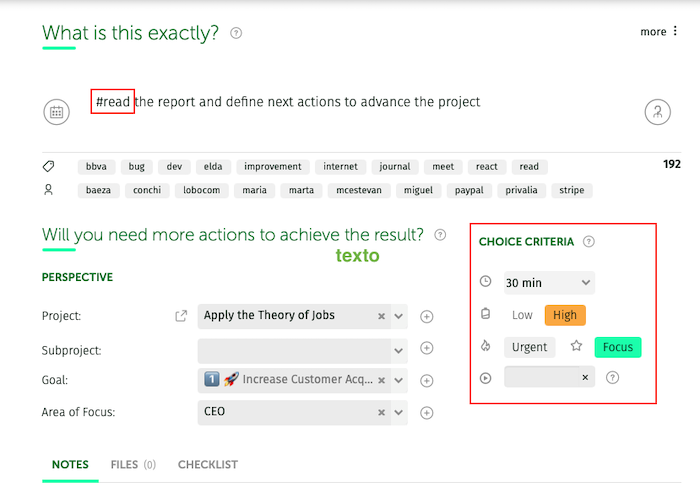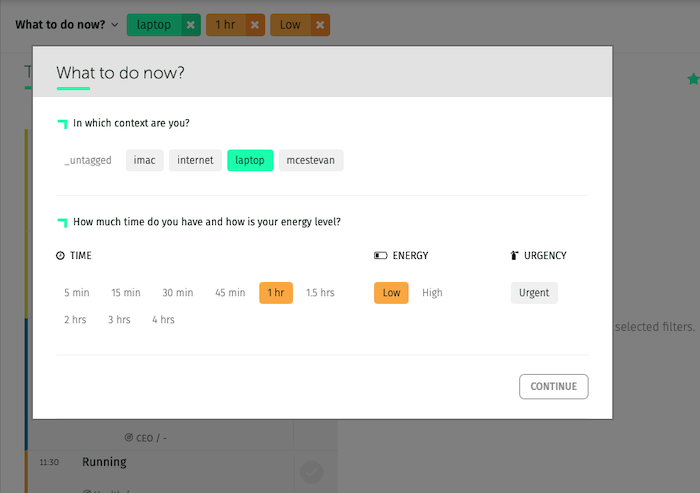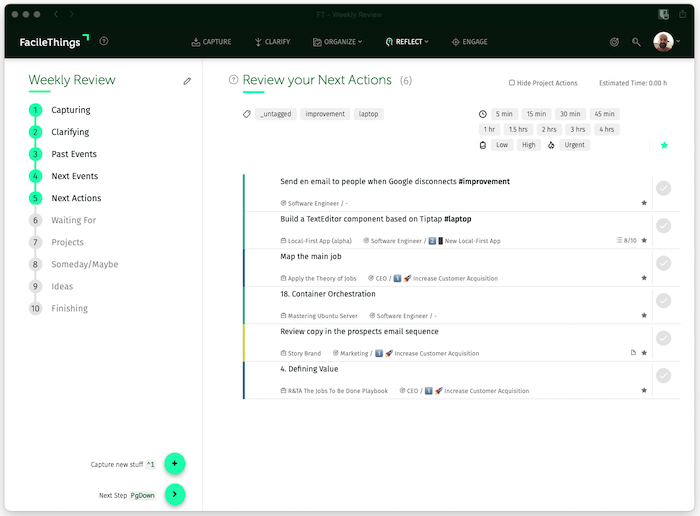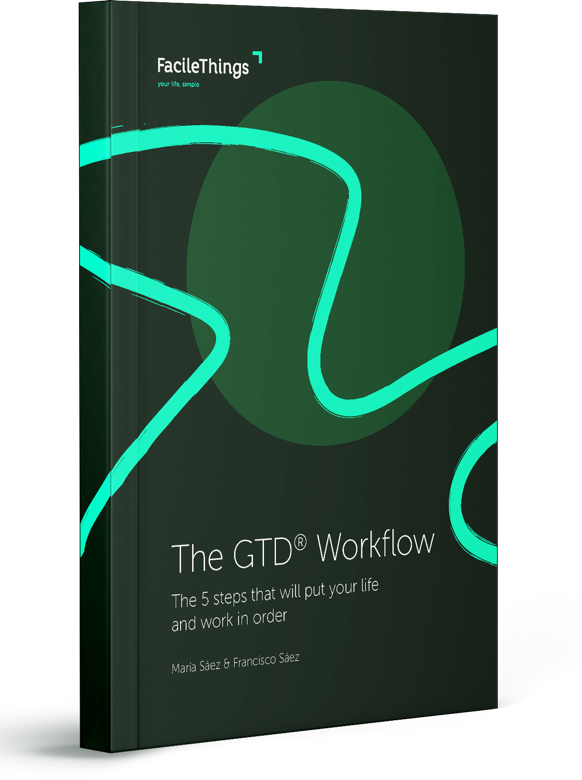Personal Productivity
Systematic Prioritization: The Habit That Multiplies Your Effectiveness
AUTHOR: María Sáez
In a world inundated with tasks, projects, and endless information, knowing how to prioritize effectively and consistently has become a critical productivity skill for personal and professional success.
Systematic prioritization is the practice of consistently developing and applying a set of objective criteria and processes for determining and ranking the importance of our tasks, projects, and commitments.
Systematic prioritization, unlike intuitive or reactive prioritization, involves:
- A reproducible method: Clear criteria that you can apply over and over again.
- Objectivity over subjectivity: Decisions based on defined principles, not on momentary emotions.
- Time perspective: Consideration of both immediate and long-term impact.
- Strategic alignment: Direct connection between daily actions and main objectives.
Essentially, it’s about transforming the question What should I do now? from an emotional and stressful decision into a clear and reliable process.
The purpose of systematic prioritization
The main purpose of systematic prioritization is to maximize the impact of our limited time and energy. Its function is to create a reliable, repeatable process that allows us to:
- Distinguish between what ’s urgent and what ’s important.
- Align our daily actions with our long-term goals.
- Reduce mental stress caused by decision overload.
- Avoid the trap of ‘busy productivity’ (being busy without being productive).
- Create clarity about what to do, when to do it, and what not to do.
Essentially, systematic prioritization allows us to focus on the right tasks, instead of merely working harder.
What are the advantages?
Systematic prioritization is the foundation of any productive system, bringing multiple benefits at all levels.
Immediate benefits
- Mental clarity: You reduce the anxiety of not knowing where to start.
- Better decision-making: You have clear criteria for choosing between options.
- Less destructive multitasking: You focus on one thing at a time.
- Stress reduction: You know you are working on the most important thing.
Long-term benefits
- Greater achievement of goals: You align daily actions with important goals.
- Better work-life balance: You consciously prioritize your personal time.
- Development of strategic intuition: You improve your natural ability to prioritize.
- Increased satisfaction: You feel real progress towards what matters.
Benefits in organitation
- More effective teams: Everyone understands what the priorities are.
- Better communication: Clear criteria for discussing priorities.
- Optimized resources: You focus your efforts on high-impact projects.
- Adaptability: You have a system for prioritizing again when circumstances change
What are the alternatives?
Ineffective systems
- Prioritization by urgency: Only reactive to the immediate.
- Pure intuition: No consistent system.
- Prioritization by ease: Only do the simplest tasks.
Common prioritization systems
- Eisenhower Matrix: Classify by urgency/importance. Limitation: May be too simplistic for complex decisions with multiple variables
- ABC Method: Assign letters according to importance. Limitation: Lack of flexibility; requires constant reclassification when new tasks arise or the context changes.
- 80/20 Rule (Pareto): Focus on the 20% that generates 80% of the impact. Limitation: Hard to pinpoint which activities belong to the critical 20%.
- OKRs (Objectives and Key Results): Align priorities with measurable goals. Limitation: Very effective for long-term goals, but can be rigid for changing daily priorities.
- MoSCoW Method: Must have, Should have, Could have, Won’t have. Limitation: Originally designed for software development, may not be well suited to personal contexts.
- Priority Scoring: Assign numerical scores. Limitation: Like the ABC method, it is a rigid system that requires recalculating all scores every time new tasks appear or circumstances change.
How should priorities be set in general?
- Define your prioritization criteria
In order to prioritize objectively and consistently, the first thing you must do is to define what makes something a priority for you. You will probably need to take into account factors such as the following:
- Impact on main goals.
- Real vs. apparent urgency.
- Resources required.
- Consequences of not doing it.
- Alignment with personal values. - Get a complete picture of your reality
In order to prioritize effectively, you need to have a view of your world as complete as possible. Anything that isn’t captured in your system won’t be prioritized in any way. Make sure you have lists of all your tasks, projects, and commitments. Include both professional and personal items. Don’t filter anything at this stage, just capture it. - Categorize and evaluate
Apply your prioritization criteria to each item on your lists. Use a consistent system (separate lists, numbers, letters, colors). Consider the context required for each task (available time, energy, resources). - Review and adjust regularly
Adjust your priorities for the day on a daily basis. Review the whole picture at regular intervals (a week or more), evaluating the elements in light of new circumstances and ensuring alignment with larger goals.
How do you prioritize if you use the GTD methodology?
In the context of Getting Things Done, systematic prioritization is integrated into several points in the workflow:
- In the Clarifying stage
When processing your inbox, don’t just define the next action; use contexts strategically to determine the best time to perform this action.
Apply the 2-minute rule with criteria. If something takes less than 2 minutes but is low priority, leave it for later. - In the Executing stage
Use the GTD four-criteria model to choose the next action to do:
1. Context (Where am I? What resources do I have?)
2. Available time (How much time do I have?)
3. Available energy (How do I feel?)
4. Relative priority (What is the most important thing right now?) - In the Reflecting stage
During the weekly review:
- Review and reprioritize active tasks and projects if necessary
- Evaluate whether there are items in the Someday/Maybe pile that should be activated
Every so often (3-6 months), review the 6 levels of perspective to ensure that they reflect your current commitments.
How do you prioritize if you use FacileThings as a personal management tool?
FacileThings, being specifically designed for GTD, offers features that enhance systematic prioritization:
- When clarifying, incorporate the most appropriate context for carrying out the action and, if possible, assign choice criteria (time required, energy level required) that will help the task to be performed at the most appropriate time.

- When engaging, if you don’t have to perform a mandatory action from the calendar, use the What to do now? tool to filter the next actions that fit your current context, available time, and energy level. From the resulting actions, choose the one that makes the most sense for you at this precise moment.

- In the weekly review, there are several sections where you can prepare your system for effective prioritization:
(1) In the Next Actions list, mark those that need short-term focus with the star icon,
(2) put projects that you cannot or do not want to continue executing on waiting state, and reactivate those that are ready to move forward,
(3) review the Someday/Maybe list and activate new actions for which relevance has increased.

Conclusion
Systematic prioritization is not just a productivity technique; it’s a fundamental skill for living and working with intention. In a world of endless distractions and constant demands, those who master the art of systematic prioritization are not only more productive, but also live a more satisfied and less stressful life.
The power of this habit lies in its ability to transform the way we view our time and our decisions. When you develop a reliable system for identifying and focusing on what really matters, each day becomes an intentional step toward your most important goals.
The beauty of systematic prioritization is that it improves with practice. Each time you apply your prioritization criteria and see the results, you refine your ability to distinguish between what ’s important and what ’s merely urgent. Over time, you develop a strategic intuition that allows you to make better decisions more quickly.






No comments